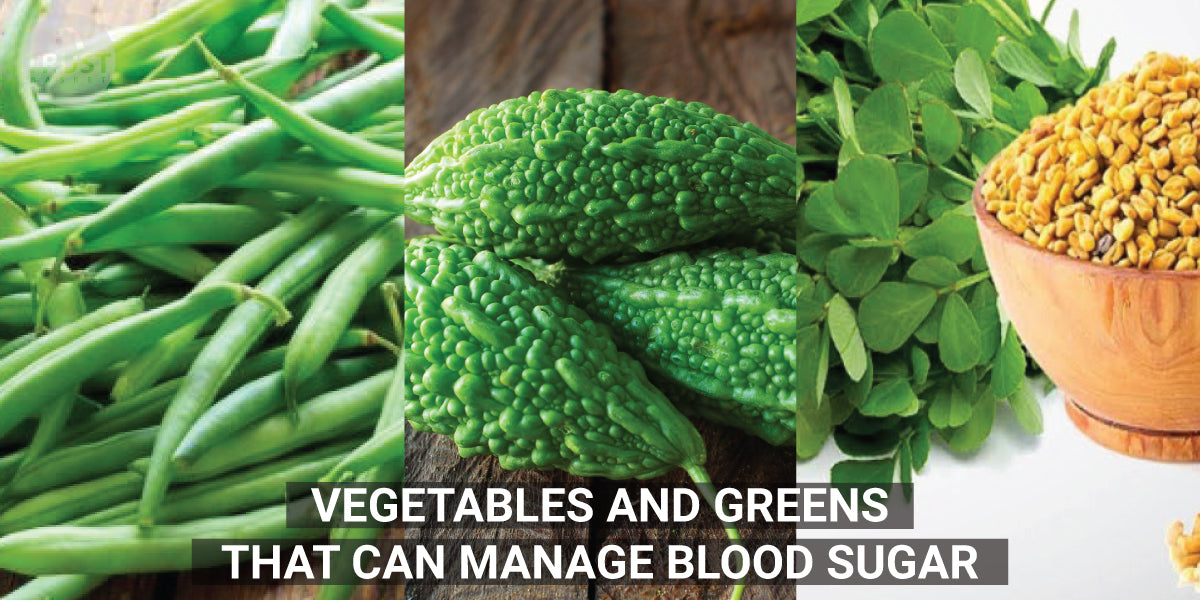How to Grow
Vegetables and Greens that can Manage Blood Sugar
Food is the basic need of any living being. It helps our body by providing the required nutrients for carrying out the metabolism. Even though food provides all the nutrients required for our body, it will be in our hand to choose the correct one depending on our body condition. For instance, if a person has diabetes, he needs to control the blood sugar. So he needs to avoid certain foods which are high in glucose. In India, more than 70% of the people are suffering from diabetes. It may look like a minor issue in the beginning but gets worse in the later stages. It can also turn into a deadly disease. Here are some of the vegetables that can help you out in maintaining your blood sugar level. It does not apply to only diabetes patients, even a normal person needs to follow this to avoid further health risks.
1. Bitter Gourd or Karela:
Image source
Bitter Gourd is one vegetable that is hated by most of the people due to its bitter taste. But it is very useful in managing the blood sugar level. It is a medicinal vegetable that is native to Asia, Africa and parts of the Caribbean. It has a very long history of use in Ayurvedic medicine. Studies say that medicinal uses of bitter gourds originated in India and then it was introduced into Traditional Chinese Medicine practices around the 14th century. Research shows that the Its juice, fruit and dried powder can all be used as a substitute for insulin and can be treated for diabetes. It is very useful in managing blood sugar levels and diabetes.
Image source
Bitter Gourd is used primarily as an alternative therapy for lowering blood sugar levels in patients with type 2 diabetes mellitus. Considerably it is the most potent and popular vegetable in terms of managing diabetes through alternative medicine. Bitter Gourd contains polypeptide-P which have structural compositions similar to the animal insulin. The overall phytochemical composition of the bitter melon consists of charantin, steroidal saponins, and alkaloids. Charantin specifically augments glycogen synthesis within liver and muscle cells. All these compounds greatly contribute to the hypoglycemic effects of Bitter Gourd.
How to Grow: https://www.trustbasket.com/blogs/how-to-grow/3-vegetables-that-can-be-grown-in-monsoon
2. Fenugreek or Methi:
Image source
Methi or Fenugreek is a green vegetable that contributes to managing the blood sugar. Fenugreek seeds are helpful to people with diabetes. The seeds contain fiber and other chemicals which helps the body’s absorption of carbohydrates and sugar. The seeds also help to increases the amount of insulin release in the body. Fenugreek also benefits those with heart conditions such as hardening of the arteries and high blood levels of certain fats including cholesterol and triglycerides. It also shows potential for helping those who are diabetic. Many studies focus on the seed’s ability to lower blood sugar in people with diabetes.
Image source
A study has proved that if people with non-insulin-dependent diabetes mellitus consumes 2.5 grams of fenugreek twice daily for three months, it significantly lowered cholesterol naturally along with triglycerides without affecting High Density Lipoprotein cholesterol (HDL). Eating baked food such as bread made with fenugreek flour also reduce insulin resistance in people with type 2 diabetes.
How to grow: https://www.trustbasket.com/blogs/how-to-grow/112702342-how-to-grow-fenugreek-plant-methi-plant-in-your-garden
3. Beans:
Image source
Legume vegetables like Beans, Peas and Lentils are top sources of fiber. They also provide a good amount of protein which promotes blood sugar control and makes them a nutritious alternative to inflammatory proteins. As these foods do not increase inflammation in your body, they decrease the risk for diabetes and heart disease. One cup of cooked beans provides 18 grams of protein and over 10 grams of fiber. Beans are better suggested for diabetes. The American Diabetes Association advises people with diabetes to include beans in their meals every week. They are low on the glycemic index and can help manage blood sugar levels better than many other starchy foods.
Image source
1/3 cup of cooked beans is equivalent to one starch diabetic exchange. One diabetic exchange of beans provides about 80 calories and about 15 grams of carbohydrates. Proper fiber consumption is very important in the prevention of diseases including diabetes. Beans are recommended as a regular part of a healthy diet to avoid several chronic diseases, such as coronary heart disease, diabetes and cancer.
Popular Searches: Garden Accessories for Sale, Compost Bin India, Plastic Flower Pots Online, Contemporary Plant Pots, Hanging Pots Online, Colourful Plant Pots, Bird Feeders Online, Rectangular Planters Online, Small Pots Online, Flower Pots Online, Kitchen Waste Compost Bin, Balcony Railing Planter









